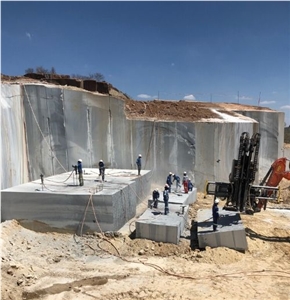Travelling With Granite Quarries in South Africa: A Visual Odyssey
Travelling With Granite Quarries in South Africa: A Visual Odyssey
Blog Article
Introducing the Mysteries of Granite Quarrying: Where Strength and Sophistication Meet
The globe of granite quarrying is a realm where the raw strength of nature assembles with human virtuosity to create structures that stand the test of time with an air of style. From the midsts of quarries to the precise polishing in workshops, the procedure of changing granite right into architectural wonders is a complex dancing of tradition and development. As we peer right into the midsts of this old craft, we start to uncover the hidden complexities that shape the extremely significance of our constructed environment.
The Origins of Granite Quarrying
In the annals of architectural history, the origins of granite quarrying are shrouded in a tapestry of ancient craftsmanship and geological marvels. Dating back to ancient Egypt and Mesopotamia, the extraction of granite from quarries marked the beginning of a journey that would ultimately cause the development of several of the globe's most famous frameworks.
Granite quarrying's origins can be mapped to the knowledgeable craftsmens that identified the rock's longevity and visual allure. Via a mix of primitive tools and sheer determination, these early quarry workers uncovered granite blocks that would certainly come to be the structure blocks of people.
As people progressed, so did the methods of quarrying granite. The Romans, renowned for their engineering prowess, created innovative techniques for drawing out granite to construct monuments, holy places, and roadways that stood the test of time.
The legacy of these old quarrying methods continues to shape modern-day design, with granite staying a symbol of toughness and sophistication in building projects around the world. (granite quarries in south africa)
Devices of the Quarrying Trade
The evolution of granite quarrying strategies from ancient civilizations to modern-day times highlights the important role played by the devices of the quarrying sell shaping the sector's methods. In old times, quarrying devices were basic, often being composed of blades, hammers, and wedges made from products like bronze or iron. These tools required considerable manpower and time to essence granite blocks from quarries.

In addition, the intro of pneumatically-driven tools and high-powered equipment has significantly lowered the physical labor needed in quarrying procedures, improving employee safety and security and productivity. As the quarrying sector remains to introduce, the devices of the trade continue to be at the forefront of driving progress and forming the future of granite removal.
Drawing Out Blocks of Granite
Using precision equipment and advanced strategies, the removal of granite blocks from visit the website quarries has actually become an innovative procedure in the modern quarrying sector. Controlled blowing up methods are after a fantastic read that utilized to damage apart the granite into manageable areas.

Sprucing Up and Finishing Strategies
To attain a perfect surface on granite blocks, knowledgeable craftsmens employ a collection of precise polishing and ending up methods. After the first removal and shaping procedures, the granite blocks undertake an extensive polishing stage to enhance their all-natural charm and durability. One typical method made use of in polishing granite is ruby abrasion, where industrial rubies are used to grind and brighten the rock to a smooth surface. This procedure not only develops a lustrous surface area but likewise ensures harmony in shade and structure throughout the granite block.
In addition to sprucing up, ending up strategies are used to more improve the granite's look. By carefully choosing and applying these polishing and finishing techniques, artisans can change raw granite obstructs right into charming pieces that display both toughness and style.

Environmental Effect and Sustainability
With the expanding focus on ecological consciousness in the market, granite quarrying methods are significantly scrutinized for their impact on natural sources and lasting sustainability. In addition, the transport of granite from quarries to processing facilities generates carbon discharges, additionally adding to ecological destruction.
To mitigate these impacts and guarantee sustainability in granite quarrying, market stakeholders are embracing different actions. Applying advanced technologies to reduce energy consumption and water usage, reclaiming quarried land for ecological remediation, and promoting responsible sourcing practices are some strategies being employed. Furthermore, certifications such as the Forest Stewardship Council (FSC) and the Management in Power and Environmental Layout (LEED) aid customers determine ecologically friendly granite products.
Final Thought
In final thought, granite quarrying is a process that needs specialized tools and strategies to essence blocks of granite and brighten them to a high i thought about this degree of finish. While the ecological impact of quarrying can be substantial, efforts are being made to boost sustainability methods in the industry. On the whole, granite quarrying is a delicate equilibrium between using the stamina and style of this natural rock while reducing its influence on the atmosphere.
Report this page